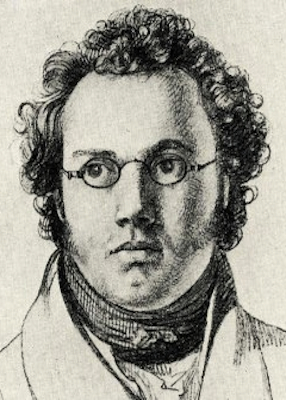Instrumental combinations
Whereas "orchestration" refers to the deployment and combination of instruments in large ensembles, "instrumentation" is a wider term that also embraces the ingenuity of composers and arrangers in the handling of small ensembles. J. S. Bach experimented with a variety of instrumental groups throughout his composing life. A striking example is the band that he selected to accompany the solo bass singer in the "Quoniam" movement from his Mass in B minor.

According to George Stauffer, "The 'Quoniam' is one of Bach's most extraordinary arias. The setting—bass voice, horn, two bassoons and continuo—is unique in his oeuvre. Indeed, one is hard pressed to find the combination elsewhere in the Baroque repertory." [2]
The opening bars of Beethoven's Sonata for Violin and Piano, Op. 96 demonstrate how both contrast and blend of timbres work when composing for instruments. In bars 1-10, "the violin and piano echo one another's motifs", [3] emphasising the contrast between their sounds. However, in the passage that follows (bars 11-20), the two instruments blend exquisitely as they "dovetail their efforts in long, soaring, arpeggiated lines in parallel motion". [3] Here, the violin line is "sandwiched" between the two piano lines. "Collaborating, the instruments genially traverse an agreed route: they are of one mind; neither needs to develop a separate perspective, let alone to advocate a contending view of experience. Instead, external concord finds inner confirmation, with each instrument completing, ratifying, and reinforcing the other." [3]

The haunting second movement of Schubert's Trio in E-flat major exemplifies the variety and interest that is possible with just three instruments. Writing of this movement Charles Rosen speaks of how Schubert "often concentrated, not on the motif, but on the space outlined by the motif, rearranging the elements within that space in different permutations." [4] The movement opens with the main theme played on the cello with the piano providing a trudging accompaniment consisting of repeated chords:

When the theme repeats a few bars later, these roles are exchanged. The piano plays the melody in octaves, while the violin and cello play the accompaniment:

Later in the movement, the piano plays both the theme in the right hand and the accompaniment in the left, leaving the violin and cello free to provide decorative countermelodies:

The concluding bars of the movement ring the changes in instrumentation yet again, adding further ideas, such as the falling octave figure in the first and final bars, while varying and enriching the harmony and instrumental color. The strings here accompany the piano playing pizzicato, before returning to their bows for the deeply expressive final bars:

Other works featuring distinctive instrumentation
- Rossini, Petite messe solennelle (1863): twelve singers, two pianos and harmonium;
- Saint-Saens, The Carnival of the Animals (1886): flute, clarinet, glockenspiel, xylophone, 2 violins, viola, cello, double bass and two pianos;
- Debussy, Sonata for flute, viola, and harp (1915);
- Stravinsky, The Soldier's Tale (1918): cornet, trombone, clarinet, bassoon, violin, double bass and percussion;
- Schoenberg, Herzgewächse , Op. 20: song for high voice accompanied by celesta, harmonium and harp; Serenade , Op. 24: clarinet, bass clarinet, mandolin, guitar, violin, viola and 'cello.
- Villa-Lobos, Chôros No. 4 (1926): three horns and trombone;
- Bartók, Sonata for Two Pianos and Percussion (1937);
- Messiaen, Fête des belles eaux (1937): six ondes Martenot; Quatuor pour la fin du temps (1941): clarinet, violin, cello and piano;
- Stockhausen, Kreuzspiel (1951): oboe, bass clarinet, piano and four percussionists;
- Cage, Imaginary Landscape No. 4 (March No. 2) (1951): 12 radios, 24 players;
- Boulez, Le Marteau sans maître (1955): alto flute, viola, vibraphone, xylorimba, guitar and percussion; Sur Incises (1996–98): three pianos, three harps, and three percussionists;
- Goeyvaerts, De Zang van Aquarius (The Song of Aquarius, 1984): eight bass clarinets.






